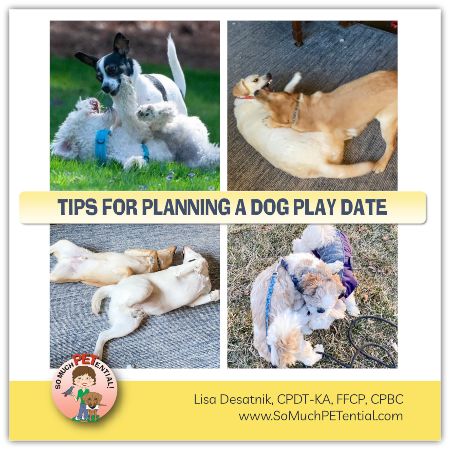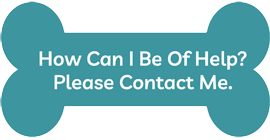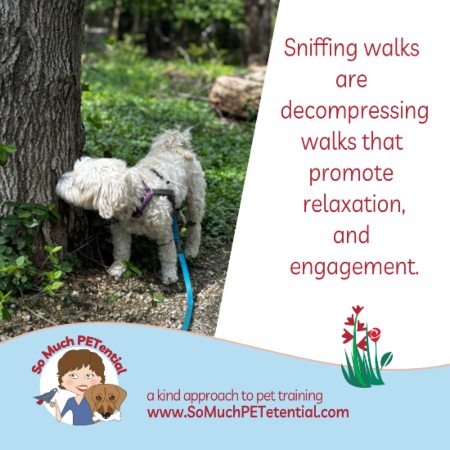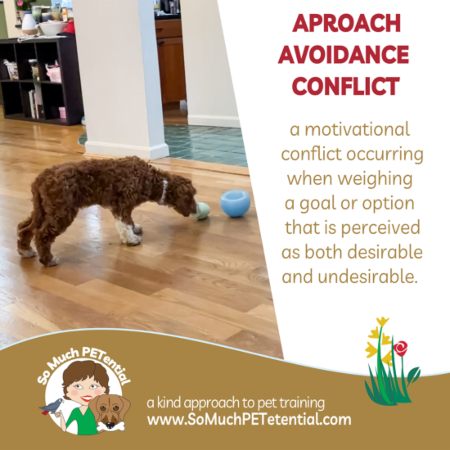Playing is such a great for form of enrichment, exercise and practice of social skills. That is…so long as it is good, healthy play. If it isn’t a positive experience for both dogs or puppies, it could be teaching and strengthening behaviors you don’t want to see. And, be aware that, just like with human kids, things can change quickly and unpredictably. In this post, I will talk about holding a successful dog play date including sharing tips for recognizing dog body language, good play as well as tips for how you can help to make it as safe and fun as possible.
 Ironically, I had started this post a week ago and then got to hear a presentation by Dr. Camille Ward, M.S., M.S., Ph.D., CAAB, president and founder of About Dogs LLC. Dr. Ward spoke about The Science of Dog Play and Its Applications.
Ironically, I had started this post a week ago and then got to hear a presentation by Dr. Camille Ward, M.S., M.S., Ph.D., CAAB, president and founder of About Dogs LLC. Dr. Ward spoke about The Science of Dog Play and Its Applications.
Dr. Ward shared four reasons why animals play:
- Play helps them prepare for life as adults which means they may practice behaviors they will need to strengthen. Play for predatory species may involve stalking, pouncing, biting or bite shakes while prey species may do erratic dashes, leaps in the air, twisting and turning.
- Through play, animals practice preparing for the unexpected. A dog may pounce on a play partner when that partner is not paying attention. Within the safe play context, the animals can experiment with risk.
- Animals play to test a relationship as play is a key factor in social bonding.
- Play is food for the brain, and plays an important role in cognitive development.
Recognizing Good Dog Play:
Different dogs have different styles of play, and, sometimes it can look downright scary to many pet parents. There can be growling, barking, pinning, chasing, pouncing and mock bites; but there can also be rolling over, play bowing, and running away. To understand what is good play, learn how to spot these four elements, known as MARS.
MARS In Dog Play – 4 Important Elements To Watch For
Meta-Signals
Meta-signals are behaviors and gestures that dogs use to communicate with each other that they are only playing. These include bouncy motion, efficient movements, loose bodies. You may also see behaviors like moving away to sniff, looking away, or yawning to indicate a break.
Activity Shifts
Dogs that are playing will not be stuck on any one type of behavior such as chasing. They may for example, go from pinning another to chasing to rolling on the ground. There are a lot of pauses in good dog play to prevent escalation. The breaks can be very brief or longer, and then resuming play. You may see a variety of calming signals during the break such as turning away, body shake off, or sniffing the ground. You may see meta-signals when they are ready to resume playing.
Role Reversals
In good play, the roles shift. One dog may begin chasing the other, and then, the chaser becomes the chased. Or one dog could be pinned to the ground, and then may switch and be the one on the top. However, this is not always perfect as different dogs have different preferences.
Self-Handicapping
This occurs when one dog adapts his/her play style to give the playmate an added advantage. I wrote a whole post about self-handicapping. Learn more by clicking here.

Behaviors That Caution – This Is No Longer A Fun Game
The play grows in intensity without a break as one dog relentlessly goes after the other.
One of the dogs is continuously showing avoidance behaviors like moving away, hiding, looking away while also showing other stress behaviors such as tail tucked or furrowed face.
The dog’s bodies stiffen and hackles (the hair on a dog’s upper back) may raise. With the stiffen body can be a closed mouth, quick and efficient movements, over-focus on the other dog, tall body posture, high and tight tail wag, curled lip or low warning growl, standing over the other dog, ear position changes.
The tone or volume of vocalizations shift. Also, one dog may begin incessant barking which may or may not be tolerated by the playmate. In either case, the barker is practicing a behavior that may not be tolerated by the next dog (or person).
Multiple dogs ‘gang up’ on one dog. Any dog can be overwhelmed by a group of dogs surrounding, pushing, chasing or piling on top of him/her. A dog that is chased by a group of dogs has the potential for the pack prey-drive instinct to come out and should be stopped.
Please read my blog post on dog parks.
Especially when you see these signs, it is time to redirect in a light, positive way so as to encourage a positive response to moving away.
Also, beware that, especially for larger and rougher playing dogs, there is a potential danger of a collar or harness getting pulled or twisted during play. Martingale collars, choke collar or prong collar should most definitely not be worn during a play date.
NOTE: if your dog or puppy shows a sudden change in wanting to participate in play or other interactions, it could potentially be a sign of an underlying medical issue. It would be a good idea to have your veterinarian evaluate.
Managing The Play Date
Be selective on your invitation list. You don’t want your puppy or dog to interact with another dog that will overwhelm him/her, which could impact your dog’s future behaviors around other dogs.
Remember this…you should pretty much ALWAYS be ACTIVELY SUPERVISING the entire time. I have seen so many people bring their dog to a park to play, while they socialize with other people or spend time on their phones. To ensure a positive experience for both players, you need to be able to watch (and know what to look for) and redirect as needed.
If you are going to another location, allow your dog some time to get acclimated to the space by allowing some time for sniffing before introducing the two dogs. If either dog becomes offensive or defensive on the other’s property, then it is best to meet in a neutral setting. Allow ample place for them to move around. Do not have both dogs on long leashes as those can become tangled.
Some dogs will need to build up confidence to interact with the other. Doing a treat scatter in the grass or walking them on a leash parallel to each other can help. Watch for loose body muscles and meta signals before allowing them to play.
It can be helpful to begin with the larger dog on a leash while the handler is managing that dog’s behaviors to allow the smaller, less experienced dog to feel safe. I have had people engage their bigger leashed dog in searching for a food scatter while my little dog could move around – moving farther or closer. (Note that leashes can create frustration and other problems so they should be loose and detached from you when it is safe to do so.)
ACTIVELY INTERRUPT PLAY. Practice calling your dogs away from each other. You can then ask them to sit or lay down, and then release them to go back to playing.
There may be times when you need to use restraint to move your aroused dog from the other. It is a good idea to practice collar grabs in advance, teaching your dog positive associations with having a hand on his/her collar. When you are moving your dog away, keep the positive energy, praise and reinforcing coming as you move away. You don’t want your dog to learn a negative association with play or moving with you.
The Play Consent Test
If you are not sure whether or not your dog or puppy is enjoying the play, a play consent test will help. (Also, follow my tips above for supervising and managing.) You do this by calmly moving the dogs away and then gently restrain the one that was doing the pinning or chasing. Then, give the other dog a choice. Does that dog run back to re-engage in play? If not, then that dog is saying he/she is not enjoying that style of play at that time and it is time to stop.
Remember that just as not all human children are cut out to play with each other, neither are all dogs. Choose your dog’s play mates carefully and then manage carefully. Play should be an activity that both parties enjoy.







